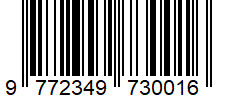Optimizing Antibiotic Therapy in Critically Ill Patients: The Role of Radiological Imaging and Pharmacokinetics in Infection Management
Authors: Aminah K. Alanazi, Maryam H. Aldossari, Fahad Alenizy, Zahra A. Asiri, Dima F. Almangour, Bader H. Alanazi, Ali A. Almalki, Maha S. Gassas, Rania A. Sharaf, Amer S. Alhumaidan, Ahmed A. Shareefi
DOI: https://doi.org/10.5281/zenodo.13922748
Short DOI: https://doi.org/g76899
Country: Saudi Arabia
Full-text Research PDF File:
View |
Download
Abstract:
Background: Managing infections in critically ill patients is challenging due to altered pharmacokinetics and complex disease processes. Integrating radiological imaging with pharmacokinetic monitoring may optimize antibiotic therapy.
Objective: This study assessed the impact of combining radiological imaging and therapeutic drug monitoring (TDM) on infection resolution and clinical outcomes in critically ill patients.
Methods: A prospective observational study was conducted with 120 critically ill patients at a tertiary hospital. Radiological imaging (chest X-rays, CT scans) and pharmacokinetic monitoring were used to guide antibiotic therapy. Clinical outcomes, including infection resolution, ICU stay, and mortality, were analyzed.
Results: Patients whose antibiotic doses were adjusted based on pharmacokinetic monitoring had significantly higher infection resolution rates (87% vs. 60%), shorter ICU stays (14.5 vs. 19.1 days), and lower mortality (11% vs. 27%). Radiological improvements were strongly correlated with achieving therapeutic drug levels (p < 0.001).
Conclusion: Combining radiological imaging with pharmacokinetic monitoring significantly improves infection resolution and clinical outcomes in critically ill patients, supporting a multidisciplinary approach to optimizing antibiotic therapy.
Keywords: critical care, pharmacokinetics, radiological imaging, antibiotic therapy, therapeutic drug monitoring, infection management
Paper Id: 231319
Published On: 2019-07-18
Published In: Volume 7, Issue 4, July-August 2019





 All research papers published in this journal/on this website are openly accessible and licensed under
All research papers published in this journal/on this website are openly accessible and licensed under 